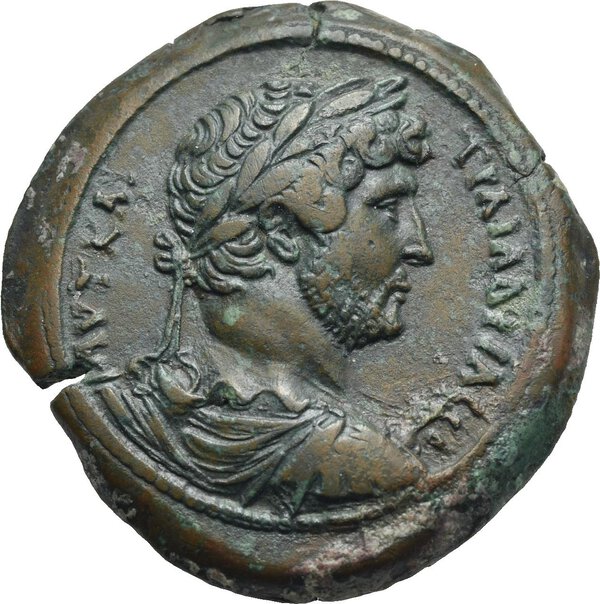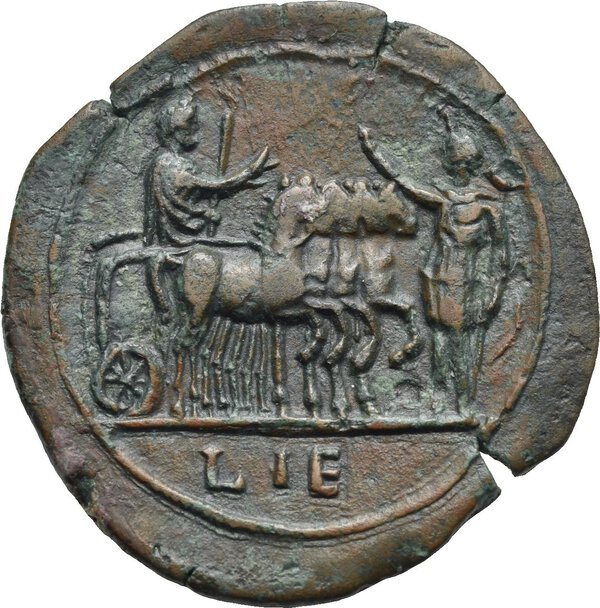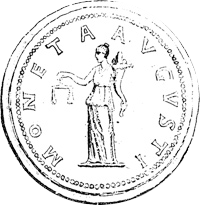





Egypt. Alexandria. Hadrian, 117-138. Drachm (Bronze, 35.94 mm, 23.65 g). Dated RY 15 = AD 130/1. AYT KAIC TPAI AΔPIA CЄB Laureate, draped and cuirassed bust of Hadrian right, seen from behind. Rev. L IE (date) in exergue. The Emperor with toga and eagle-tipped sceptre, is standing on quadriga stride to the right approaching Alexandria standing left and holding vexillum in her left hand; Hadrian greets Alexandria with his right hand and Alexandria answers to the greeting with her left hand. RPC III 1780.18 (this specimen illustrated). Dattari 1595 (this specimen). BMC 868. Milne 1314. Emmett 966. Good Extremely Fine.
Ex Giovanni Dattari collection, Il Cairo. Ex Dott. Piero Beretta collection, Milan, February 1976.
This drachm is an artistic masterpiece of coin engraving. I have already mentioned the journey and stay in Egypt made by Hadrian with his court in 129-130 AD, an occurrence that already at that time had great resonance in the empire and above all had important testimonies in Alexandrian coinage as can be seen in nos. 228 and 229 of the collection, delivered in two splendid tetradrachms. The opportunity arose to illustrate and appropriately commemorate this exceptional political and cultural event on the bronze drachm, the coin of the highest form issued by the mint of Alexandria, and it was necessary here to call upon the talent of an engraver of special skill and artistic sensibility.
The result is this coin that is absolutely special in terms of preservation, iconographic value, patina, centring, large module, artistic quality and style of the engraved images. The statuary portrait of Hadrian on the obverse exalts all the sovereign and courtly majesty of this philhellenic emperor and philosopher of immeasurable and grandiose culture and sensitivity. On the reverse, the solemnity and completeness of Hadrian's triumphal entry into the Egyptian capital with great pomp is striking, erected on the quadriga pulled by horses at a trot towards the deified Alexandria that exchanges the Roman salute with that of the emperor. The aesthetic genius of Giovanni Dattari, the first owner of this museum specimen, was able to choose it and bring it into his famous collection where it was among the most prestigious coins.


